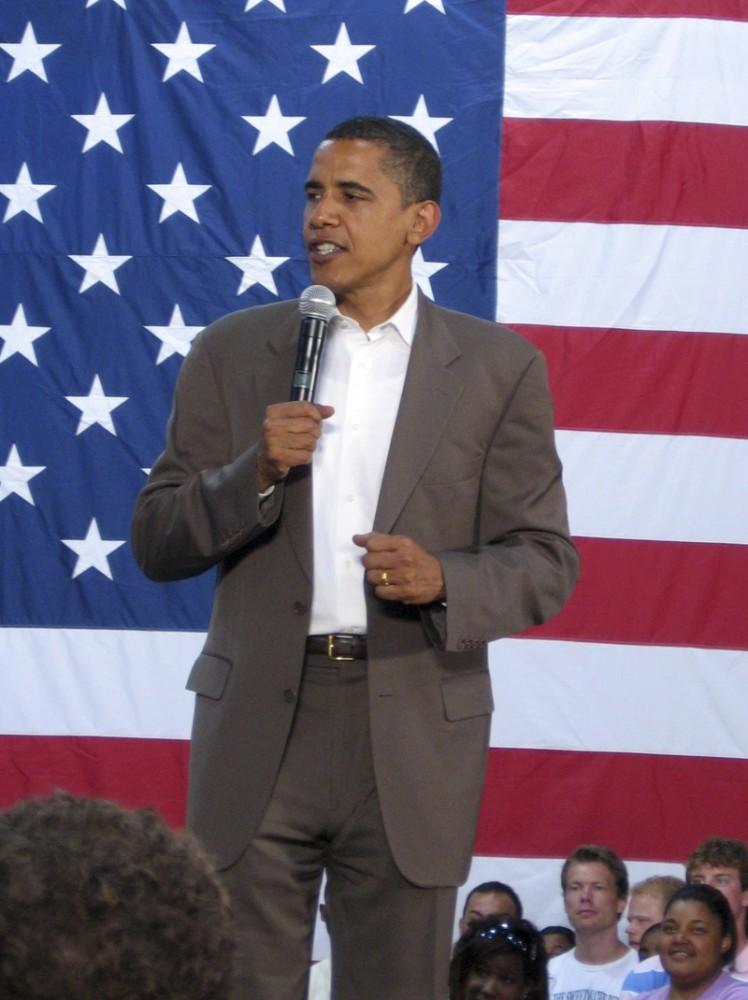PAY AS YOU EARN

Courtesy Photo/ obamasouth.com President Barack Obama
Nov 10, 2011
The plan, which could become effective as early as 2012, is aimed at lessoning the burden of student debt on students struggling to repay federal college loans.
According to FinAid.org and FastWeb.com, the current numbers show student debt at $850 billion outstanding and the Federal Reserve reports consumers owe $828 billion in credit card debt.
“Over the past three decades, the cost of college has nearly tripled, and that is forcing you, forcing students, to take out more loans and rack up more debt,” Obama said in his Denver speech.
While some politicians, including Robert Shireman, former deputy undersecretary at the Department of Education, argue that the plan would increase confidence among students about their post-graduate perspectives, other lawmakers have early doubts as to if the plan will be effective and whether this plan will have enough qualifying students to make an impact.
“The best student loan repayment program is a student with a job,” said U.S. Rep. Bill Huizenga, R-Mich., who represents the state’s 2nd District.
State Rep. Bob Genetski, R-Saugatuck, said the plan addresses how students pay for education but ignores the larger issue of total education costs.
“I see nothing in the plan to reduce tuition overall or encourages universities to bring down tuition,” Genetski said. “There all sorts of incentives to keep loaning kids more money, but there’s nothing to get universities on the hook to say, ‘Boy, we need to cut tuition so that more kids can go to college for less money.’”
Who benefits?
In a 2011 report from Grand Valley State University’s institutional analysis department, students who graduate from GVSU are expected to have $26,912 in total student debt, putting GVSU nearly $2,000 higher than the national average. This is an increase from an average of nearly $9,000 in 2006.
Michelle Rhodes, director of financial aid at GVSU, said the president’s plan could help GVSU students.
“It can absolutely help Grand Valley students,” Rhodes said. “It can help a select group of students who meet the criteria.”
According the plan, there are two ways students can benefit. One way is by consolidating all loan types.
The plan would allow borrowers to move all Federal Family Education Loans — all private loans taken out before July 1, 2010 — under the current Direct Loan plan, which would give borrowers one payment per month and reduce their interest rate by .5 percent.
The second aspect of the proposed plan is an adjustment to income-based repayment. Under Pay As You Earn, borrowers would pay only 10 percent of their income toward the loan every month in comparison to the current 15 percent. In addition, after 20 years of payments, any remaining loan balance will be forgiven.
To qualify for the second aspect of Obama’s plan, students must have taken out loans in 2008 and in 2012.
Robert Moran, director of federal relations and policy analysis at the American Association of State Colleges and Universities, said under the current guidelines, the plan would not benefit enough people.
“Most seniors in post-secondary education have already taken out their senior loan,” Moran said. “If you think about it, the types of students who are going to have a loan in 2008 and a loan in 2012 is a very small number.”
Huizenga said the plan also raises questions about the student decision-making process.
“It just seemed really odd to me,” he said. “I don’t have a 30-year mortgage and if it’s not paid off in 20 years, I go, ‘Oh, I guess I don’t have to pay the last 10 years.’ I think it sends conflicting messages. If there’s no responsibility hanging over your head at the end of this thing, why wouldn’t you make minimum payments and after 20 years walk away?”
Genetski said the proposal does not address bigger issues.
“That kind of sends the message you won’t be on the hook,” he said. “My question then, who will be on the hook? I assume the tax payers.”
Avoid debt altogether
With several alternatives to loans, Rhodes says students should be informed about their alternatives, such as scholarships.
“Make sure your are borrowing only what you need, make sure you know what is a loan and what is a grant,” Rhodes said. “Don’t accept something just because it is offered to you and take a large refund check if you don’t really need it.”
When looking for alternatives, Rhodes said students should connect with faculty members to learn about possible scholarships, in addition to checking the GVSU scholarship database and constructing a scholarship calendar.
Other than that, she says students need to just keep asking questions and learn about all their options, including Obama’s proposal.
“The overall intention is it’s trying to make education affordable,” she said. “I think if that message keeps coming out that Obama or the administration is going to do things to make education affordable for everyone that’s a good thing.”
>>>
By the numbers: student debt
$24,000
2011 national average student debt
$26,912
2011 GVSU average student debt
$850 billion
Current national total in outstanding student debt
$1 trillion
Expected total in national outstanding student debt
before 2011 end.

























